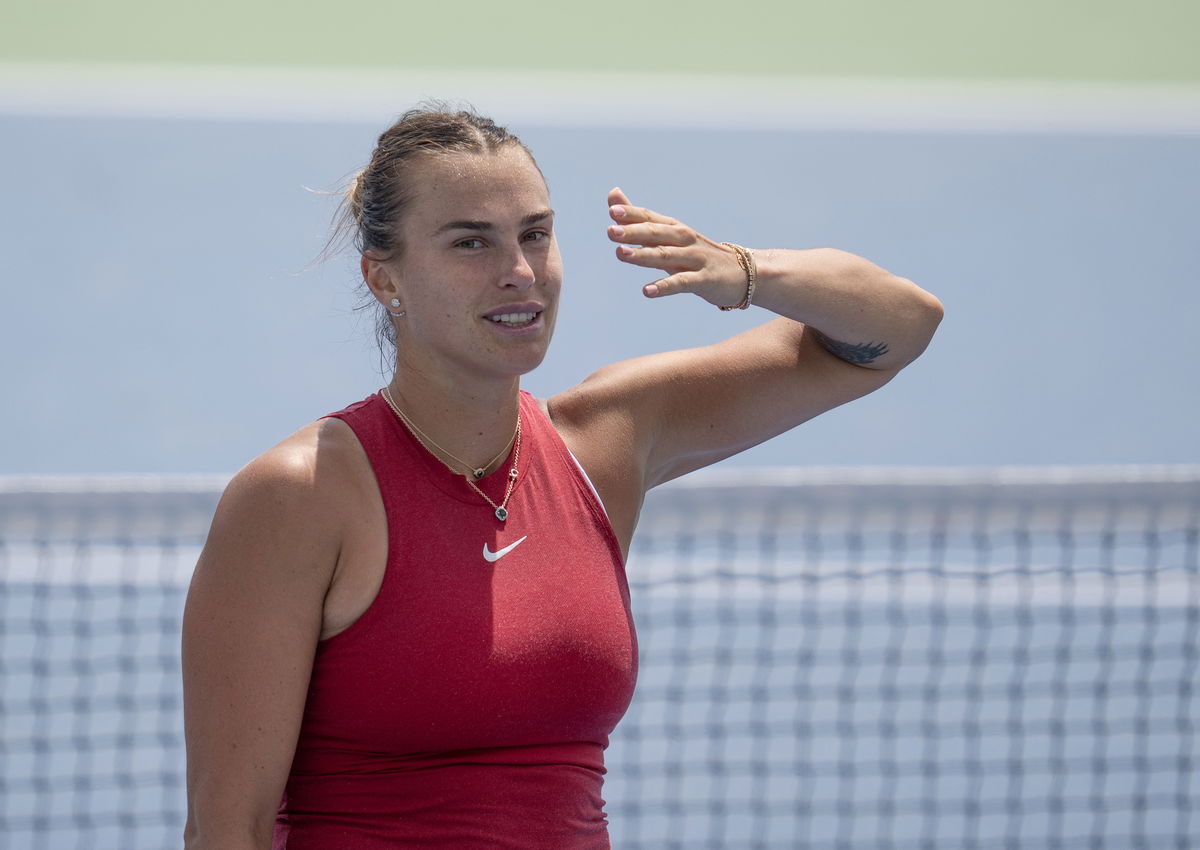
USA Today via Reuters
Aug 17, 2024; Cincinnati, OH, USA; Aryna Sabalenka acknowledges the crowd after winning her match against Liudmila Samsonova on day six of the Cincinnati Open. Mandatory Credit: Susan Mullane-USA TODAY Sports

USA Today via Reuters
Aug 17, 2024; Cincinnati, OH, USA; Aryna Sabalenka acknowledges the crowd after winning her match against Liudmila Samsonova on day six of the Cincinnati Open. Mandatory Credit: Susan Mullane-USA TODAY Sports
Aryna Sabalenka had always had the upper hand against Qinwen Zheng. Eight meetings, seven wins, including that commanding performance in the 2024 Australian Open final. But last month, Zheng finally turned the tables. On Rome’s red clay, no less, she took down the World No. 1 in the quarterfinals, announcing that the tide might just be turning. And now, in a dramatic French Open rematch, they’re at it again, this time under the spotlight of Court Philippe Chatrier. Tensions are already running high, with a heated point dispute adding fuel to the fire.
Watch What’s Trending Now!
It’s a clash between two serious contenders. Zheng, the reigning Olympic champion, made history on these very grounds last summer when she stunned four-time French Open winner Iga Swiatek to strike gold. Aryna Sabalenka, meanwhile, was fighting to finally go the distance at Roland Garros. This was her third straight quarterfinal in Paris — she fell in the semis in 2023 and bowed out at this stage last year.
The first set brought the drama early. At 4-5, 30-all, the Chinese tennis star halted the rally, convinced Sabalenka’s shot had sailed long. The chair umpire came down to inspect the mark and ruled it in. But Hawk-Eye told a different story as it showed the ball was out. That controversial call handed the World No.1 a crucial set point.
ADVERTISEMENT
But Zheng wasn’t done. She shook off the disappointment, broke back, and pushed the set to a tiebreak. Despite her efforts, Aryna Sabalenka clinched the first set. The Belarusian player then stunningly went on to win the match after closing out the second set 6-3.
Qinwen Zheng stopped play at 4-5, 30-30 because she thought Aryna Sabalenka’s ball was out.
The umpire comes to check it and she says the ball was in.
Hawkeye disagrees with the umpire’s decision.
This call gave Aryna a set point… crucial moment. pic.twitter.com/L5NQuL0Sig
— The Tennis Letter (@TheTennisLetter) June 3, 2025
Electronic line calling, a mix of cameras, sensors, and computer technology, is meant to bring pinpoint accuracy to tennis. But on the shifting red clay of Roland Garros, even the best tech struggles to keep up. The loose surface moves constantly during play, which can interfere with the system’s ability to track the ball reliably.
ADVERTISEMENT
That’s one reason why the French Open stands alone among the Grand Slams. It’s the only major that still relies on human line judges; players aren’t allowed to challenge calls using electronic replays, leaving many players frustrated. Mirra Andreeva was visibly annoyed during her first-round match against Cristina Bucsa when her appeal for a call reversal was denied. She turned to her box in disbelief, but the decision stood. And the issue isn’t limited to the French Open. Similar situations unfold at other clay-court tournaments as well.
Sabalenka had her own moment of protest in Stuttgart. During her quarterfinal against Elise Mertens, she snapped a photo of a mark on the court after a shot she believed was in was called out. The umpire did not reverse the decision, and Sabalenka was given a warning for unsportsmanlike conduct. “Yeah, it was definitely in,” she said afterward. “I understand that everyone makes mistakes, but if you do, you should have the guts to admit it and make the right call.”
ADVERTISEMENT
In Madrid, Alexander Zverev also took a photo of a questionable mark after a shot from Alejandro Davidovich Fokina was ruled in by the electronic system.
Despite the disputed line calls, Aryna Sabalenka has kept her focus and powered through to the semifinals.
ADVERTISEMENT
Aryna Sabalenka notches first top 10 win at Roland Garros
There were plenty of questions going into this quarterfinal clash. Had Qinwen Zheng figured her out? Was the clay surface giving Zheng the edge she needed to flip the head-to-head? Aryna Sabalenka had lost to her in Rome just a few weeks earlier, but after brushing aside Amanda Anisimova in the fourth round, she was quick to downplay that loss.
“I have to say I was pretty exhausted in Rome,” said Sabalenka. “Honestly, I was playing the tournament constantly thinking I shouldn’t be playing and I needed a little rest before Roland Garros.”
And judging by her on-court interview in Paris, that break paid off. Aryna Sabalenka looked fresher, stronger, and more focused from the start.”I was actually glad I lost that match, because I needed a little break before Roland Garros,” she told Marion Bartoli. “Today I was just more fresh. I was ready to battle, I was ready to fight, I was ready to leave everything I had on court to get this win.”
ADVERTISEMENT
With this win, she has claimed her first Top 10 win at Roland Garros. That’s a milestone the 27-year-old had already achieved six times combined at the Australian Open and US Open, but never before on the Parisian clay, until now.
The World No.1 moves into her 11th Grand Slam semifinal, the most of any player since Maria Sharapova reached that number back in 2011 at Roland Garros. She’ll now look to break new ground and reach her first French Open final, and sixth major final overall, as she awaits the winner of the clash between No. 5 seed Iga Swiatek and No. 13 seed Elina Svitolina. Can she grab her first non-hardcourt Slam finally? Let us know what you think!
ADVERTISEMENT
ADVERTISEMENT
ADVERTISEMENT

